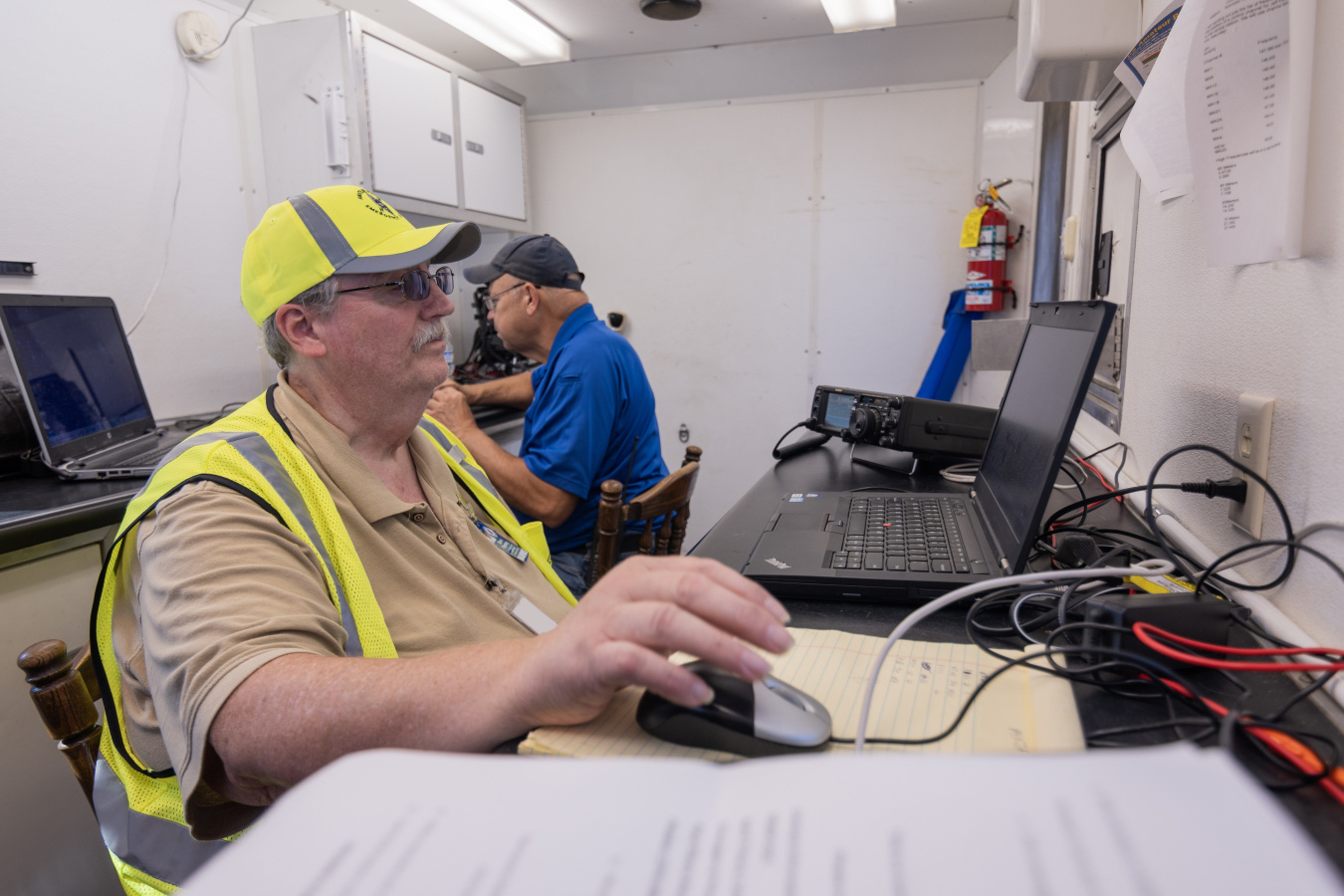The U.S. Department of Energy Office of Environmental Management Paducah Site has incorporated amateur radio into a drill for its emergency management program. September 23, 2025
Office of Environmental Management
September 23, 2025Amateur Radio Emergency Service operators conduct a first-of-its-kind drill at the Paducah Site designed to test alternative communication in the event of an emergency.
PADUCAH, Ky. — The U.S. Department of Energy (DOE) Office of Environmental Management (EM) Paducah Site has incorporated amateur radio into a drill for its emergency management program — a first in the nuclear cleanup complex that demonstrates the site’s ability to maintain backup communications in the event of widespread equipment failure or telecommunications service loss during an emergency.
In the drill, local Amateur Radio Emergency Service team members mobilized at the Paducah Site Emergency Operations Center where they established a portable transmission station. Instead of relying on traditional internet connection, they relayed drill messages as emails over radio waves to the DOE headquarters location in Washington, D.C., and the Portsmouth Paducah Project Office in Lexington, Kentucky.
The unique drill highlights how EM draws from innovation to ensure safety excellence while working to meet DOE’s legal cleanup responsibilities
“This drill highlights our commitment to preparedness and innovation when dealing with emergencies,” Paducah Site Lead April Ladd said. “By incorporating amateur radio, we’ve added another layer of resiliency that can keep vital communication lines open, even when traditional methods are down.”
A mobile transmission station is mobilized at the Paducah Site Emergency Operations Center during a drill to provide ham radio communication.
Historically, operators of amateur radio — commonly known as ham radio — have provided critical support during emergencies, including recent natural disasters affecting western Kentucky communities. Their participation in the Paducah Site drill underscores the important role community partners play in supporting DOE’s mission, such as mutual aid agreements with local law enforcement and outside first responder agencies.
Four Rivers Nuclear Partnership (FRNP), the Paducah Site deactivation and remediation contractor, coordinated the innovative exercise. FRNP is tasked with conducting cleanup in accordance with the Comprehensive Environmental Response, Compensation, and Liability Act.
“Strong partnerships between DOE, contractors and the community are at the heart of the emergency management program at the Paducah Site,” FRNP Program Manager Myrna Redfield said. “Exercises like this not only enhance our preparedness but also strengthen ties with local responders who share our commitment to protecting people and the environment.”
The drill shows amateur radio can bridge communication gaps when cell phones, landlines or internet service are unavailable, giving first responders a powerful tool to ensure critical connections continue during a crisis.
While the Paducah Site maintains several communications systems, the addition of amateur radio provides a proven, low-cost and reliable alternative when conventional infrastructure is unavailable, site officials say.
-Contributor: Dylan Nichols
To receive the latest news and updates about the Office of Environmental Management, submit your e-mail address.



